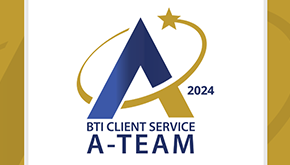Supreme Court Reverses Federal Circuit on Inducement of Infringement
The U.S. Supreme Court on Monday limited the instances in which a party might be liable for inducing patent infringement. In a decision titled Limelight Networks, Inc. v. Akamai Technologies, Inc., the Court held that a party cannot be liable for inducing patent infringement unless direct infringement of the patent has occurred. The Court’s decision reversed the Federal Circuit’s rule, which had held that liability for inducement may exist even if there is no direct infringement.
As the number of issued patents with computer-based method claims increases, the ease with which these claims are enforced will become increasingly important. In order to infringe a method claim in a patent, one party must directly infringe—or perform—every step of the patented method. However, in 2012, the en banc Federal Circuit had held that a defendant who performed some steps of a method claim and encouraged others to perform the rest could be liable for inducement of infringement, even if no one entity directly infringed (i.e. performed each and every step) of the method claimed in the patent. Akamai Techs., Inc. v. Limelight Networks, Inc., 692 F.3d 1301 (Fed. Cir. 2012).Simply put, if an Internet Service Provider (ISP) and a customer shopping on a company’s website hosted by that ISP combine to perform all of the steps of a method, the ISP could be liable for inducing patent infringement.
The unanimous Supreme Court reversed this holding and found that a defendant cannot be liable for inducing infringement of a patent when no one has directly infringed the patent. The Court explained that inducement of a method claim can only occur where the performance of the claimed steps can be attributed to a single person. In so holding, the Court limited when a party may be liable for inducing infringement of a patent. The Court noted the “concern” about permitting a would-be infringer to evade liability by simply dividing performance of a method patent’s steps with another entity that the would-be infringer does not direct or control. However, the Court invited the Federal Circuit to revisit its rule that liability for direct infringement requires the infringing acts to be attributable to a single party. Patentees will do well to pay attention to the Federal Circuit’s opinion on remand, as it seems likely to reconsider its case law regarding direct infringement of method claims where the method steps are performed by multiple actors. In the meantime, patentees will have a significantly more difficult task to prove inducement of infringement in situations involving methods performed by multiple parties.










































